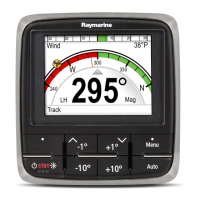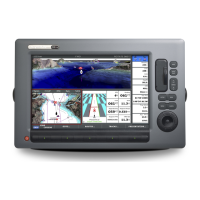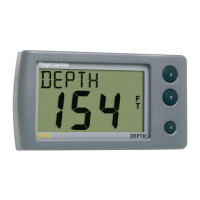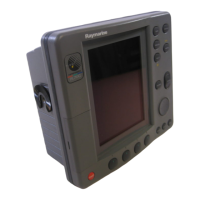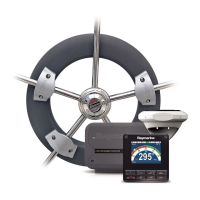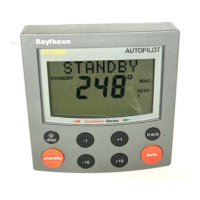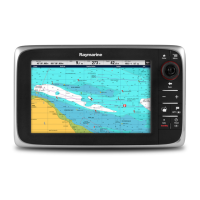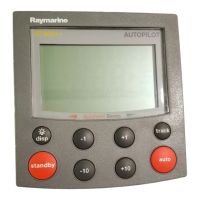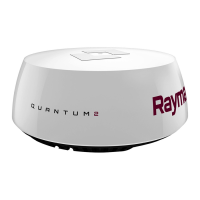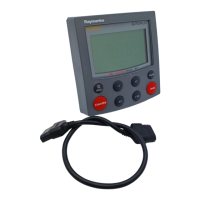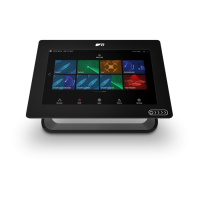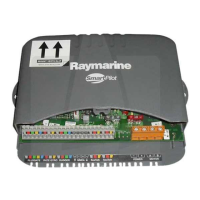11.1 Alarms
Alarms are used to alert you to a situation or hazard
requiring your attention.
Some examples of alarms are:
• Anchor alarm — Used when anchored, this alerts
you to a change in depth which could mean that
the chain length requires adjusting.
• Depth and speed alarms — These alarms alert
you when your depth or speed moves outside of
specied limits, for example a minimum depth.
• MOB (Man Overboard) alarm — Received from an
MOB system.
When an alarm occurs, a message is displayed and
an audible alarm may sound.
You can either:
• Silence the alarm, or
• Silence the alarm and edit the alarm settings.
Note: With the exception of the Alarm clock,
Speed and Sea temperature; SeaTalk systems will
only be able to switch alarms on and off, SeaTalk
ng
systems will also be able to adjust settings.
Alarm settings
Most alarms are generated locally using specied
limits. They are also transmitted on the SeaTalk
ng
network.
Alarm name Alarm type Description Action
Detecting
magnetics
Linearization
is required.
Linearize
the internal
compass.
Magnetic
elds
detected
Initial
Linearization
complete,
further
linearization
will be
performed
in the
background.
None.
Calibration
required
Indicates a
pilot that has
not been fully
calibrated.
Initiated in
Standby
mode, for a
few seconds
after initial
power-up.
Dockside
and Seatrial
calibration
needs to be
undertaken.
• Change
pilot mode
• Self
cancelling
Alarm name Alarm type Description Action
Off Course
Indicates
Vessel is off
course by
more than the
pre dened
alarm limit.
Initiated from
Auto, Track &
Wind modes.
• Change
pilot mode
• Change
course
• Correct
course
Route
Complete
Flagged by
chart plotter
/ navigator
when the
last waypoint
in a route
has been
reached.
• Change
pilot mode
Large Cross
Track Error
Indicates
cross track
error (XTE)
is greater
than 0.3nm
Initiated
during Track
mode or on
entry to Track
mode from
any other
mode.
• Steer back
manually
and enter
track
again.
• Check
autopilot
settings.
• Reset XTE
on the
multifunc-
tion dis-
play.
Loss of
Waypoint
data
Indicates the
source (e.g.
chartplotter)
of the
waypoint
data has
been lost
• Pilot drops
out of track
mode and
into auto
mode and
continues
on last
locked
heading.
•
Wind Shift
Indicates true
wind angle
has changed
by more than
15 degrees.
Initiated from
Wind vane
mode only.
• Change
pilot
mode.
• Change
course.
• Reduction
of change
in wind
angle.
76
p70 / p70R

